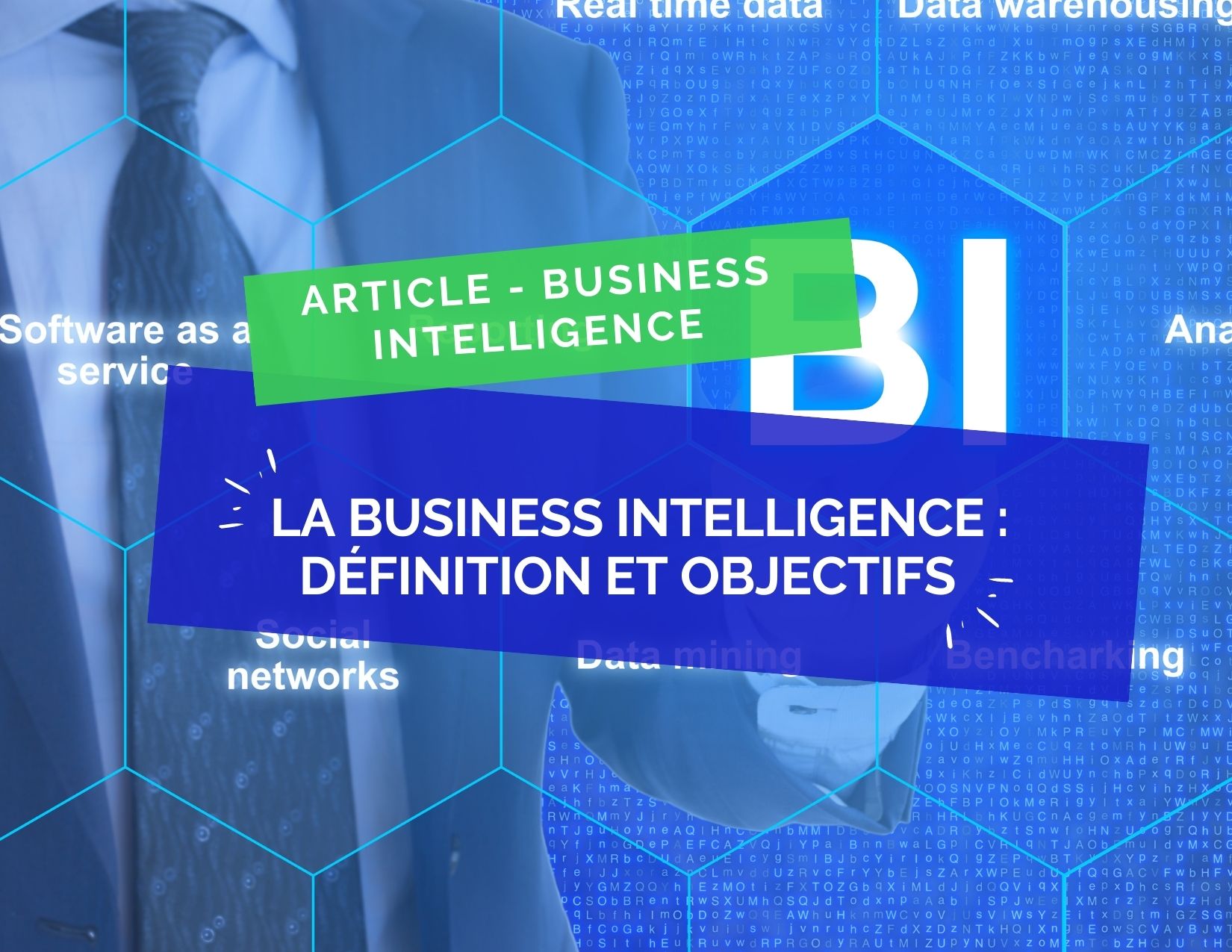Business intelligence: definition and objectives
lucas-fontaine
•
Jul 8, 2024
Business Intelligence (BI), also called decision-making computing, refers to a process that relies on data analysis.
More specifically, BI allows for the aggregation of raw data from a business or group of businesses in order to transform it into relevant information in the form of reports, graphs, or dashboards.
This data can come from both internal software and external sources to the company/group. Once "transformed" through various tools or applications, this data can be instantly visualized by managers and executives, allowing them to derive strategic analyses and make better decisions for their business.
History and evolution of decision-making computing or Business Intelligence (BI)

Today, BI is one of the crucial tools for directing and managing a business. But do you know the origins and history of business intelligence? We explain everything!
The business intelligence (BI) aims to retrieve data, so as to organize and analyze it in order to obtain a model that will be necessary for better decision-making within the company. Business intelligence aims to define relevant and reliable indicators to determine the strategy to adopt for the company or the group.
The birth of BI in 1958 is credited to Hans Peter Luhn, then an analyst at IBM. He had the idea of using computer software to exploit a company's data in order to accelerate decision-making.
However, the beginnings of business intelligence were somewhat laborious.
For several years, decision-making computing appeared as a significant advance in technology and data storage, but the concept took time to establish.
It was from the 1970s and 1980s that business intelligence truly began: the first data warehouses appeared. These data warehouses, which were ultimately servers, made possible the recording of data so that it could be analyzed.
Since its creation, BI has continued to evolve, particularly from the 2000s with the explosion of the internet. Concurrently, computers have become increasingly powerful, allowing for rapid data processing, now accessible to a wider audience since they can be processed by "non-specialists".
Business Intelligence is inherent to the tools or technologies that allow data analysis.
Today, one of the most popular solutions among businesses of all sizes (not just large groups) is SaaS software.
Some of these software, like Qotid, have specialized in Business Intelligence and the automation of reporting, crystallizing the evolution of decision-making computing in recent years by making relevant data analysis more accessible to the various departments of a company.
How will BI evolve next? How far will the use of artificial intelligence in the service of data go? Augmented analytics (which relies on AI for data analysis) seems to have a bright future ahead.

What is BI: Objective of Business Intelligence
As mentioned earlier, the goal of decision-making computing is to help companies make decisions by preparing data (DataPrep) and making it available to managers in a clear and simplified form (DataViz).
Business intelligence applies to different fields such as:
Market data (statistics, social media, competitor analysis, etc...)
Marketing data: statistics related to visits to a website, consumer data, etc...
Financial data: invoices and cash flow, for example
Human resources: number of employee absences, tardiness rates, etc...
Originally, data processing was very tedious for people with little statistical analysis skills. Now, access to this data and its use has been facilitated. It is no longer necessary to be an expert to achieve it!
We then speak of business intelligence as "self-service" or "self BI".
This type of BI differs from "traditional" Business Intelligence as it allows non-expert users to use reports more easily and quickly. It offers them a certain autonomy as they can analyze data themselves as well as create their own graphs and dashboards.
Who uses decision-making computing ?
As mentioned above, BI reaches a wide audience. Two reasons explain this: the first is that data is accessible to all, and the second is that we have all at our level familiarized ourselves with various indicators of daily life such as energy consumption, statistics on our social media, phone subscriptions, etc... This thus facilitates the understanding of dashboards and other reports in a professional context.
Business intelligence no longer only targets decision-makers but all collaborators from different departments (Sales, HR, Marketing) of a company.
The decision chain, what is it?
The decision chain corresponds to all the steps of data collection and transformation. This process can be divided into several stages:
The loading phase : The loading or data collection phase involves the extraction, transformation, and loading of data into a database. This is the "ETL" (Extract, Transform, Load) process.
The modeling phase: This storage phase involves centralizing data in a data warehouse to make it available for decision-making use.
The restitution phase : This involves providing data through reporting tools, dashboards, statistics tools, etc., to facilitate analysis and decision-making.
The analysis phase: The last step, the exploitation of data by end-users.
Why do business intelligence? : the advantages of BI
We now know that decision-making computing facilitates decision-making. But is that its only advantage? Why should you pay particular attention to business intelligence?
A wide view of the data
BI gives users the ability to have a holistic view of all key indicators of the business: accounting, inventory, and customer data are easily accessible.
A time saver
BI tools consolidate multiple data sources, which facilitates the overall organization of a business. Indeed, employees can dedicate more of their time to data analysis rather than to searching for information. For example: Reporting is often recognized as a lengthy, tedious, and time-consuming task. If this task is eliminated, it provides the opportunity to focus on more relevant tasks that will more easily lead to the achievement of set objectives.
A tool that facilitates communication
Understanding each other is a necessity in a company. This is one of the advantages that decision-making computing can offer. Standardizing language and data helps avoid misunderstandings between team members. Thus, all collaborators, regardless of their position (human resources, sales, marketers, etc.) can understand each other.
How do BI tools work?
The Business Intelligence tools (BI) are software designed to transform raw data into actionable and visually attractive information. Also known as data visualization tools, these solutions offer an intuitive interface to make data accessible and facilitate analysis.
Specifically, BI solutions enable the construction of reliable and relevant key performance indicators (KPIs) that help businesses monitor and assess their performance. With advanced features like interactive dashboards and customizable reports, users can analyze trends, identify opportunities, and make informed decisions.
In summary:
Business Intelligence (BI) is a process based on data analysis to help companies make better decisions. It allows for the aggregation of raw data from a business or group of businesses to transform it into relevant information in the form of reports, graphs, or dashboards.
BI was created in 1958 by Hans Peter Luhn of IBM and has evolved over the years to become more accessible to non-expert users through the use of SaaS software and augmented analysis based on AI. BI applies to different fields such as market data, marketing data, financial data, and human resources. It offers a broad visualization of data, time savings, and facilitates communication within the company.

F.A.Q:
1. What is Business Intelligence (BI)?
Business Intelligence (BI) is a process based on data analysis to help companies make better decisions. It allows for the aggregation of raw data from a business or group of businesses to transform it into relevant information in the form of reports, graphs, or dashboards.
2. Who created BI?
Hans Peter Luhn, then an analyst at IBM, created BI in 1958.
3. How has BI evolved over the years?
BI has evolved over the years to become more accessible to non-expert users through the use of SaaS software and augmented analysis based on AI.


